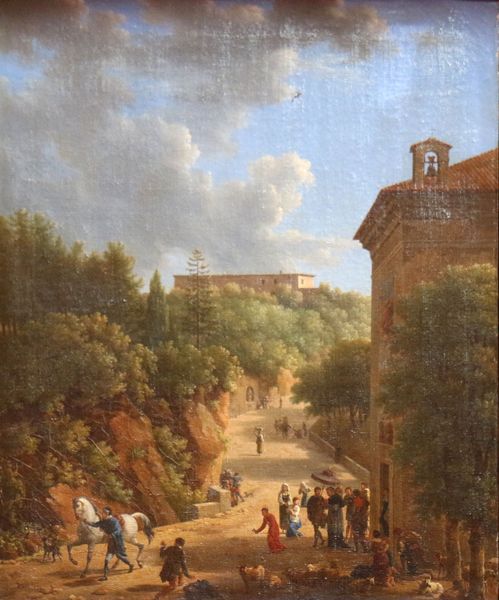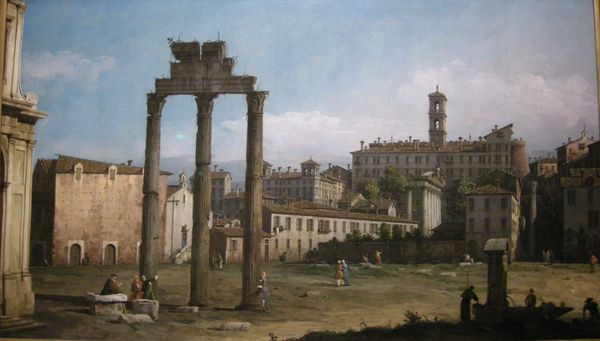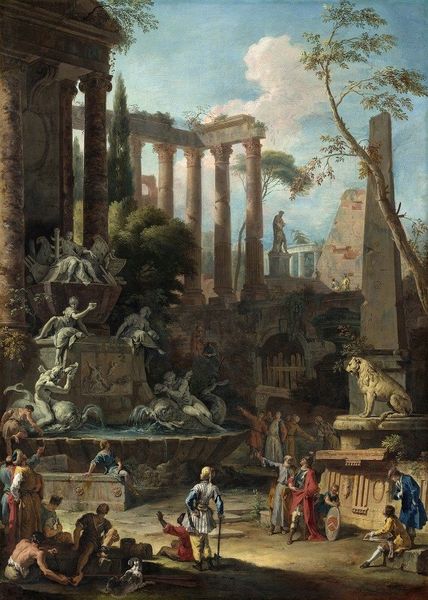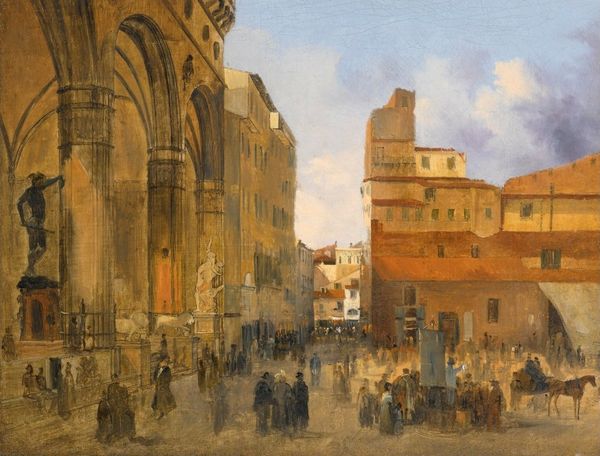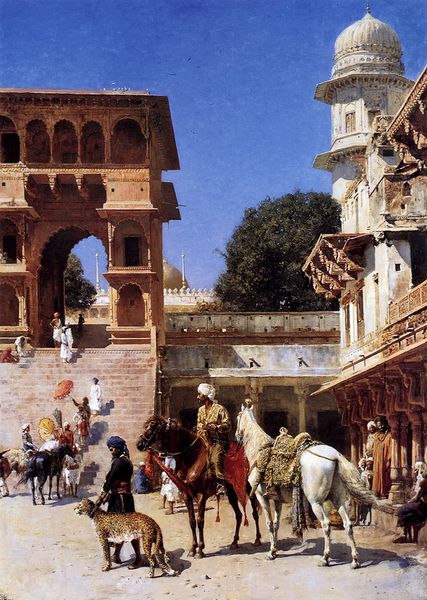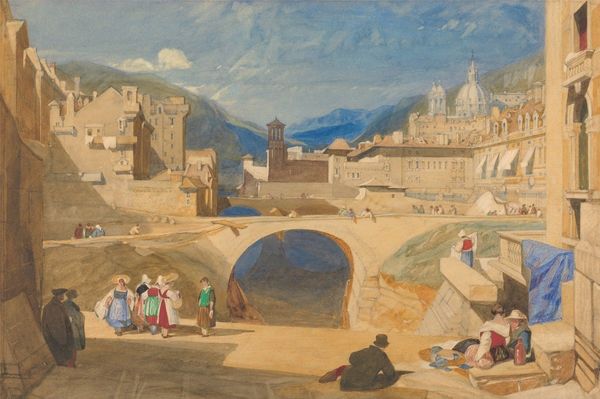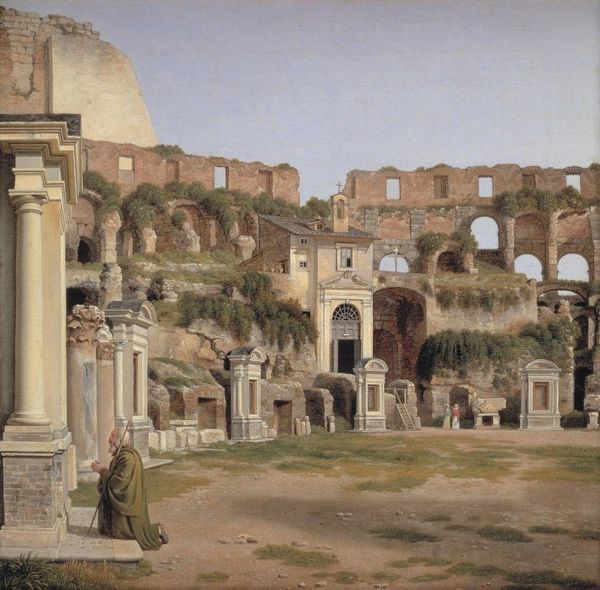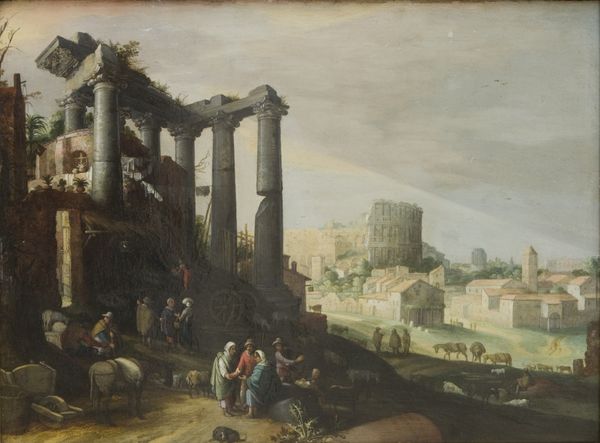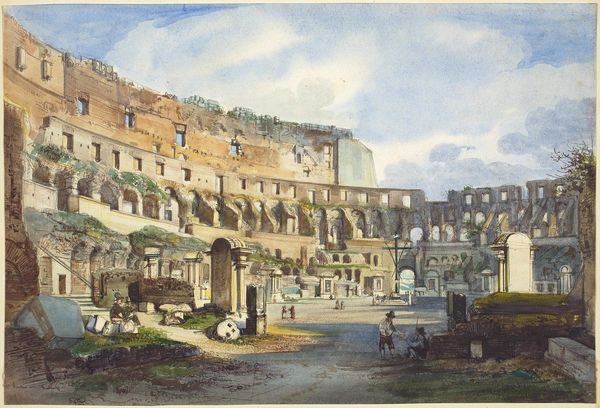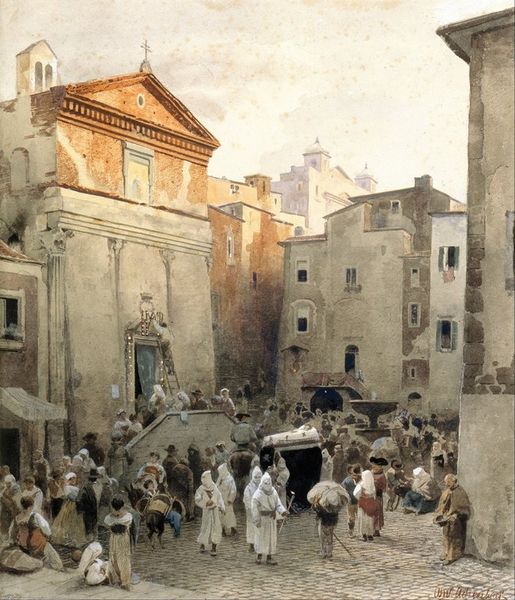
View of the interior of the Colosseum 1816
0:00
0:00
painting, oil-paint
#
painting
#
oil-paint
#
landscape
#
romanesque
#
oil painting
#
history-painting
#
academic-art
Dimensions: 25.6 x 29.1 cm
Copyright: Public domain
Curator: Eckersberg’s "View of the Interior of the Colosseum," painted in 1816, captures a fascinating scene—a religious gathering nestled within the ruins of a classical amphitheater. It now resides in the Hirschsprung Collection in Copenhagen. Editor: There’s a quiet solemnity about it, don’t you think? The light feels almost reverential as it hits the figures. You immediately notice how small the individuals praying are, juxtaposed with the towering, crumbling walls. Curator: Absolutely. Eckersberg, of course, would have considered his techniques closely—the canvas, the grinding and mixing of pigments for that naturalistic rendering...it's all so deliberate. Consider the accessibility of those materials, too; oil paints enabling realistic textures. This wasn’t some fleeting sketch; this was intended to monumentalize the occasion. Editor: The image does feel deliberate and intended. And what I find particularly compelling is this layering of histories, captured visually: the Roman Empire, its fall, the rise of Christianity utilizing and repurposing the Roman architecture, and its institutional establishment reflected in this devotional event and even down to the production of images we have today in a museum setting. How would Eckersberg himself have positioned his artwork, knowing it would be on view for an increasingly public audience? Curator: Indeed, his placement of that religious service within this frame invites us to contemplate such shifts in power, production, and religious ideologies across millennia. And the choice of oil paint emphasizes both a traditional and evolving academic context, linking his work to those historical precedents. Editor: This perspective prompts interesting considerations. By documenting it on canvas with this kind of oil application, his art itself takes on the historical relevance. It asks us, how does capturing history alter the context around it and define how it becomes perceived through his vantage point? Curator: His focus, technically, certainly shapes our perceptions, offering not merely documentation, but commentary through skillful composition. Editor: Precisely. It underscores the constant layering and repurposing of symbolic and material significance over time, creating interesting contrasts. I wonder if the church intended for Eckersberg to highlight their devotion and placement, or the backdrop of the roman infrastructure. The politics of image and history at its finest. Curator: A fitting point to conclude our reflection. Thank you for sharing your historical expertise! Editor: And thank you for guiding my eye to the intricate ways materials and production shape meaning!
Comments
No comments
Be the first to comment and join the conversation on the ultimate creative platform.

